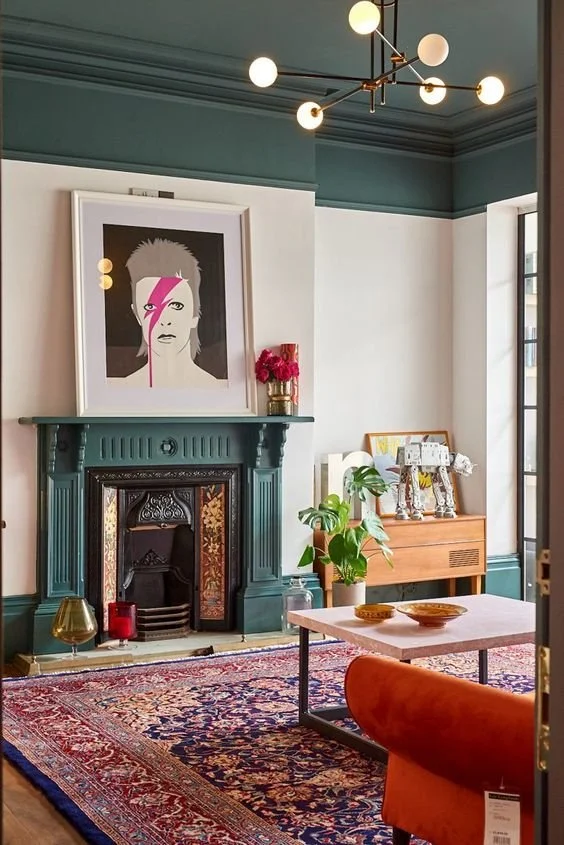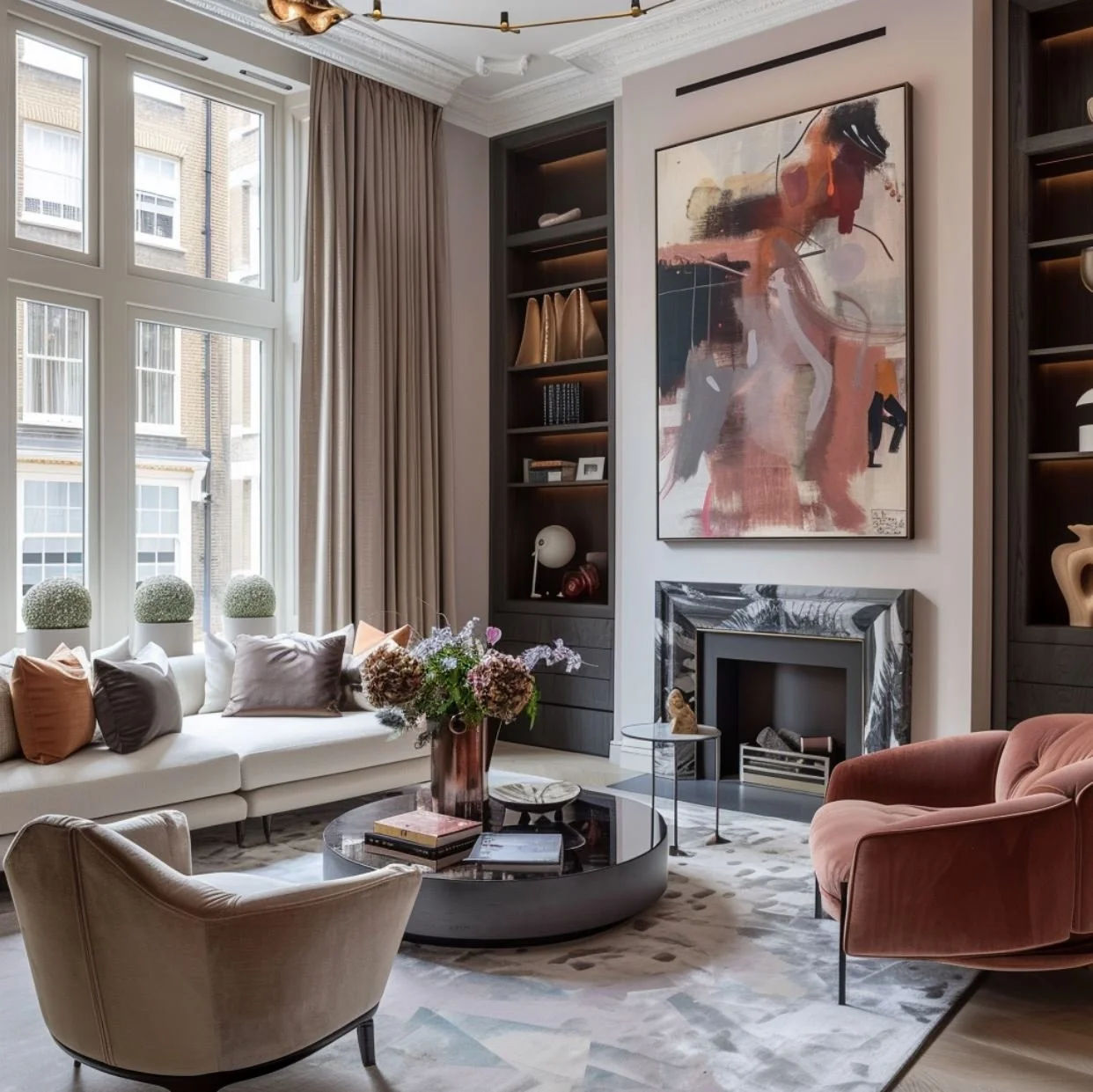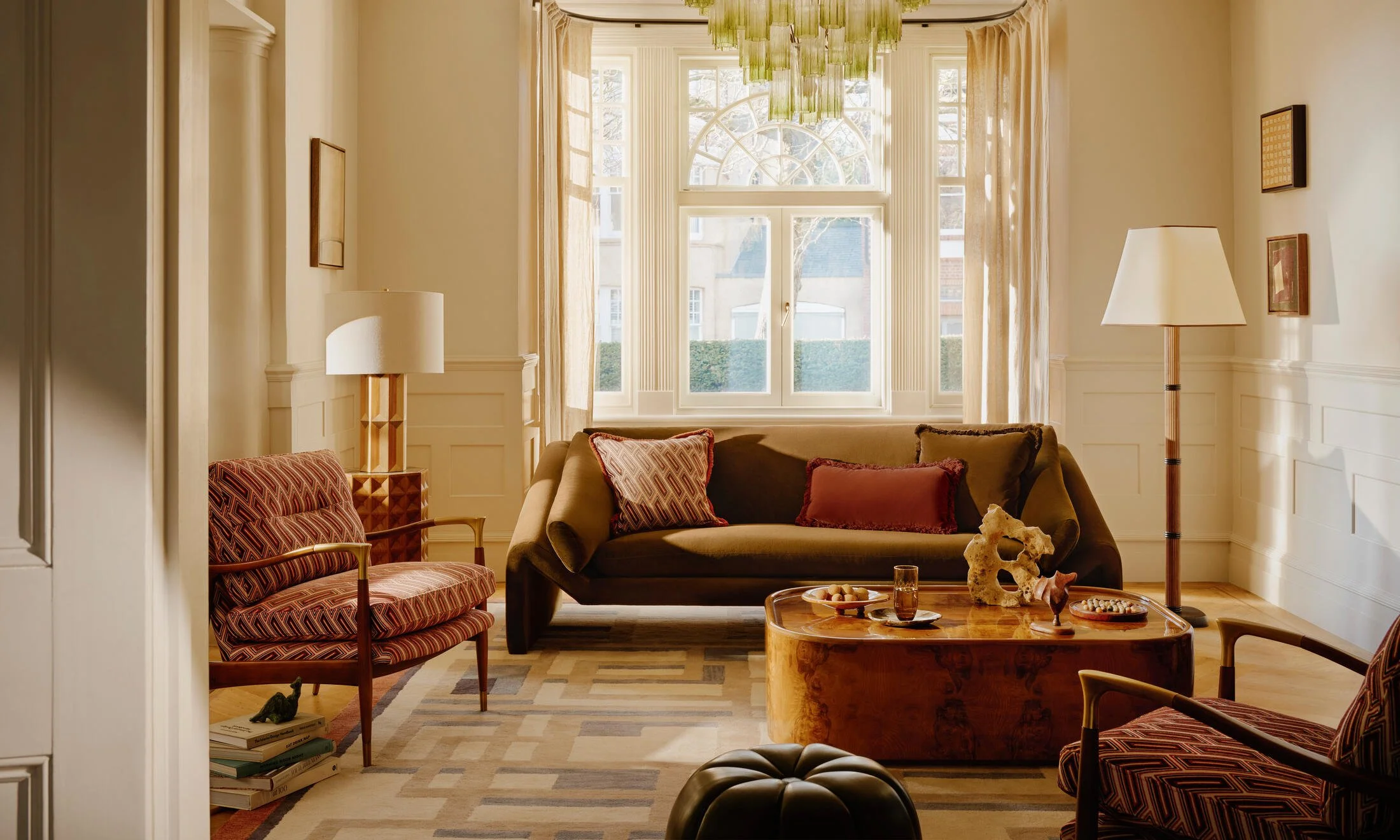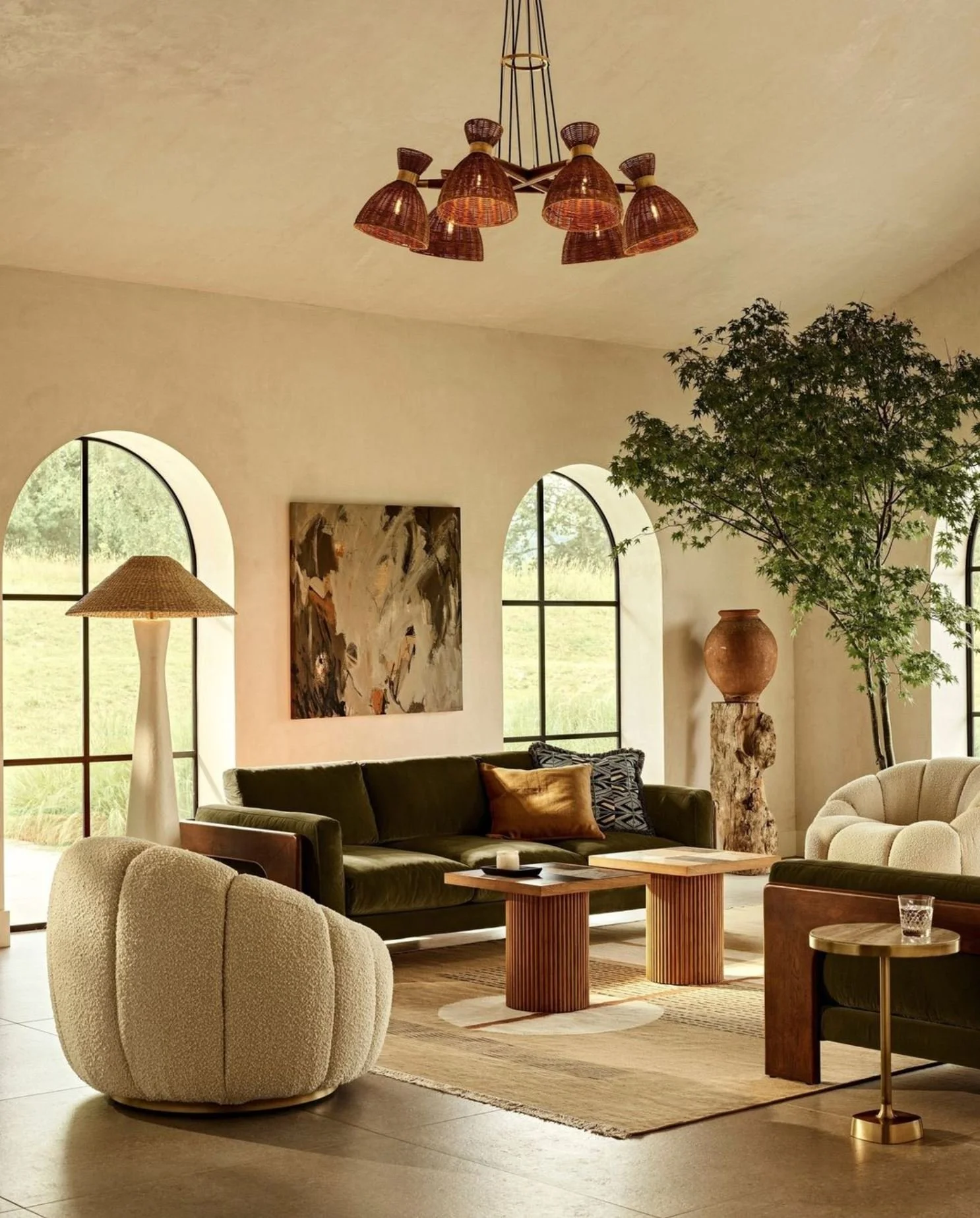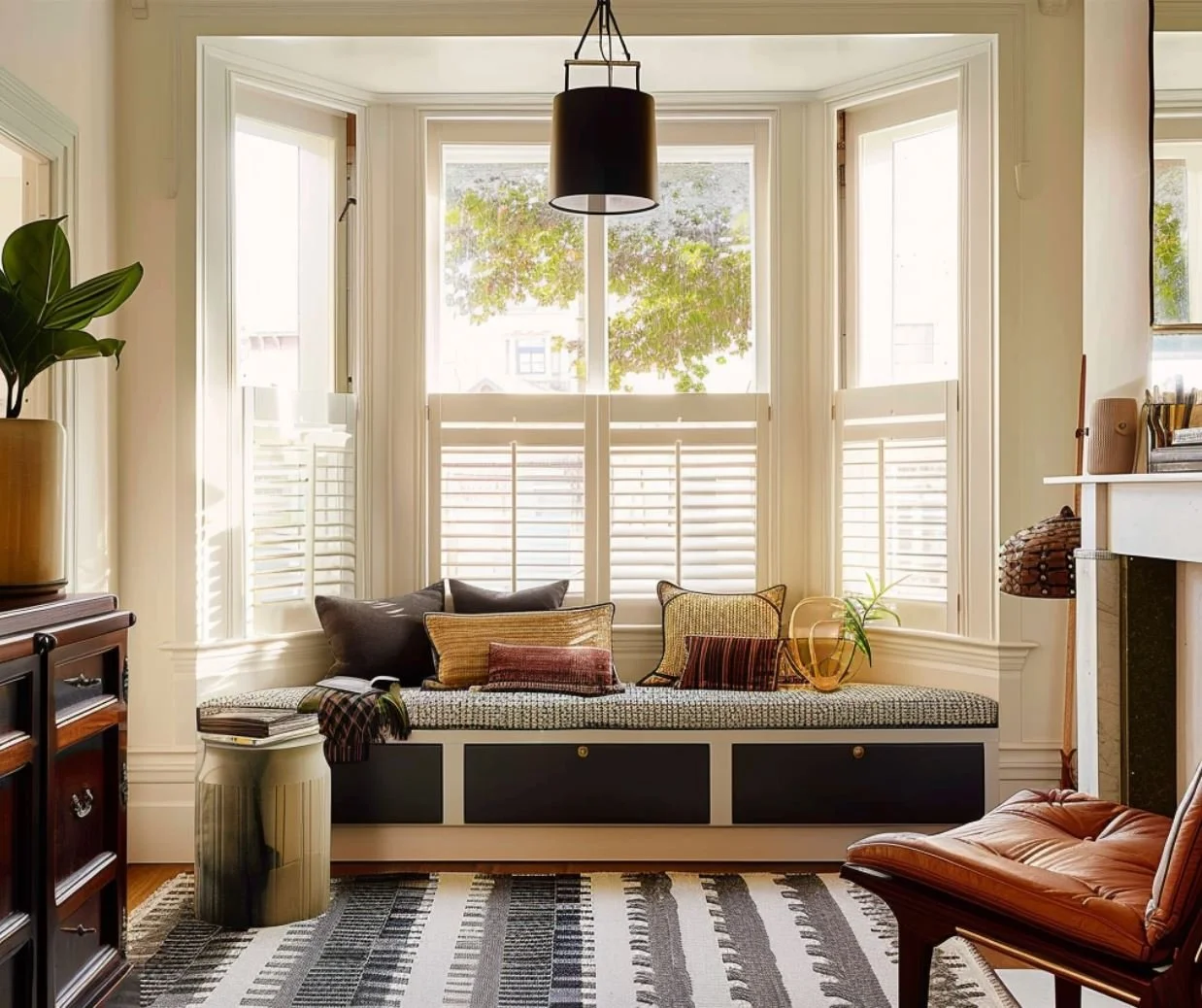10 Living Room Ideas that Beg to be Borrowed
Discover living room ideas that really do beg to be borrowed! Find out what will truly make your living room design scheme work with expert insights and practical tips from interior designer, Katie Tamsin. I’m here to help you transform your living space into a stylish and comfortable space that feels like it belongs to you.
Create cohesion with colour and pattern
Image Source: ILIV
One of the most important things you can do to make your new living room feel sophisticated and well-designed is to create a cohesive colour scheme.
How to choose a colour scheme for your living room starts by determining your colour palette – choose 5 to 6 colours and then look at to bring these into different aspects of your living room scheme in things such as; curtains or blinds, cushion covers, rugs, ornaments and wall coverings.
Keep reading to the end to discover where to find inspiration for your colour scheme.
2. Make the most of natural light
AI Design by Katie Tamsin Interiors
Let the light in! Natural light plays a huge role in our wellbeing, so making the most of the natural light you have available is an absolute must.
Consider the type of window treatment that is going to work best to allow the most natural light to flow into your space. Voile curtains can add a level of privacy, while a double track with both voile and a heavier-weight curtain can make your living room feel cosy by layering fabrics. See the photo above showing how you can position the curtain pole or track further over to the sides of the window, so the curtain ‘stack-back’ does not block the light coming in.
You might also consider Roman blinds if you have a radiator under the window or, shutter blinds to the lower half of your windows if you need extra privacy.
3. Feature the fireplace
Image Source: Shoot Factory
Many UK living rooms will feature a fireplace – whether you’ve got a country cottage, a 1930s semi a terraced house, a new build or something entirely different. A fireplace helps to create a cosy feeling home, especially with the often cold and grey weather we have here in the UK!
Often located on the wall opposite the door to the room, a fireplace makes the perfect focal point. Make it a focal point by hanging large, oversized artwork above the mantle or a beautiful, large mirror. If you’re set on using this space for your TV, opt for a Samsung Frame to disguise the TV as art when it’s not in use.
4. The Alcove Advantage
AI Design by Katie Tamsin Interiors
Living rooms with fireplaces often have a space either side of the chimney breast, especially in 1930s living rooms, or Victorian properties.
Take full advantage of this by making clever use of the living room alcoves. Use the space either side of the chimney breast to add extra storage – whether it’s built-in storage, floating shelves, or a freestanding console.
Adding clever alcove storage solutions will help to free up space in the rest of your room and provide you with a useful space to store your things or style your shelves.
5. Hold on to heritage features
AI Design by Katie Tamsin Interiors
When renovating, it helps to retain any original character features in your property. Not only will keeping original architectural features massively enhance the value of your home if you ever decide to sell it also tells the story of your home and keeps the soul of a property intact.
Heritage features to consider retaining would be original features such as cast-iron, stone or marble fireplace surrounds, picture rails, original skirting boards, paneling, original doors, decorative cornices, and ceiling roses.
6. Layer up your lighting
Image Source: Soho Home
Think about how you’re layering your lighting. Start at the top and work your way down; from ceiling lights, recess lights, wall lights, display lighting, table lamps to floor lamps. A layered lighting scheme will allow you to change the mood of your room in an instant.
I also like to install dimmable lighting in my design schemes as it gives the lighting scheme a lot more flexibility.
Think about the times of the day you often you the room and with most living rooms, it’s likely you’ll want to make sure you can switch on the ambient lighting when you’re looking to make your living room feel cosy in the evenings.
7. Anchor with a rug
Image Source: Soho Home
So often, the rug is the missing piece of the puzzle in a living room – for many reasons. But the most important, it visually anchors a room scheme, zoning the space to make it feel nicely balanced.
Opt for a rug that goes under your furniture, so it doesn’t look like it’s floating in the centre of the room. When choosing the design and style of your rug, try to pick out similar colours and pattern that you’ve used other areas of your living room.
8. Create a cosy reading nook
AI Design by Katie Tamsin Interiors
Create a cosy reading nook dedicated to putting your feet up, grabbing that cuppa, and relaxing. If you make a reading nook in your living room, chances are you’re more likely to make the time to sit down and dig into that book you’ve been wanting to read.
In the corner by a light-filled window is a great place to create a reading nook or opt for a comfy armchair next to a bookshelf with a reading lamp. Bliss! Make your reading nook feel inviting by selecting a chair with lots of comfy cushions, an ottoman or pouffe, and a throw blanket to hand.
9. Build a bay window seat
AI Design by Katie Tamsin Interiors
If a cosy reading nook is not for you, you might opt to build a bay window seating area. Use the bay window space to create a reading nook with a built-in window seat or a pair of armchairs.
Keep it comfy with soft cushions, throw blankets, and adjustable lighting for leisurely reading sessions. Best of all, you can double up the functionality on the window seat to create extra storage underneath.
If you’re wondering how to go about creating a built-in bay window seating area, you’ll most likely need to look at a bespoke design. As most bay windows will be a unique size and shape, you can employ the skills of an interior designer or craftsman to create a design that will function for your space at sit cohesively with the overall room scheme.
10. Make it uniquely you!
This is possibly the most important point of all. Making your living room unique is really about injecting your own personality into your living room.
Draw inspiration for your living room from things that you love. You might find inspiration from a piece of artwork that will feature in your living room, a favourite holiday destination or elements of nature.
Think about why you feel drawn to your point of inspiration – whether it’s the colours, patterns or how you feel when you’re experiencing that thing. Look to incorporate aspects of what you’re inspired by into your living room scheme, so it feels uniquely you.
If you’re still feeling a little overwhelmed and would like help designing your living room, click here to learn more about the remote and in-person interior design services I offer.
Or, If you’ve found this living room design guide helpful, why not share it with someone who might also be going through the process of designing their living room?



